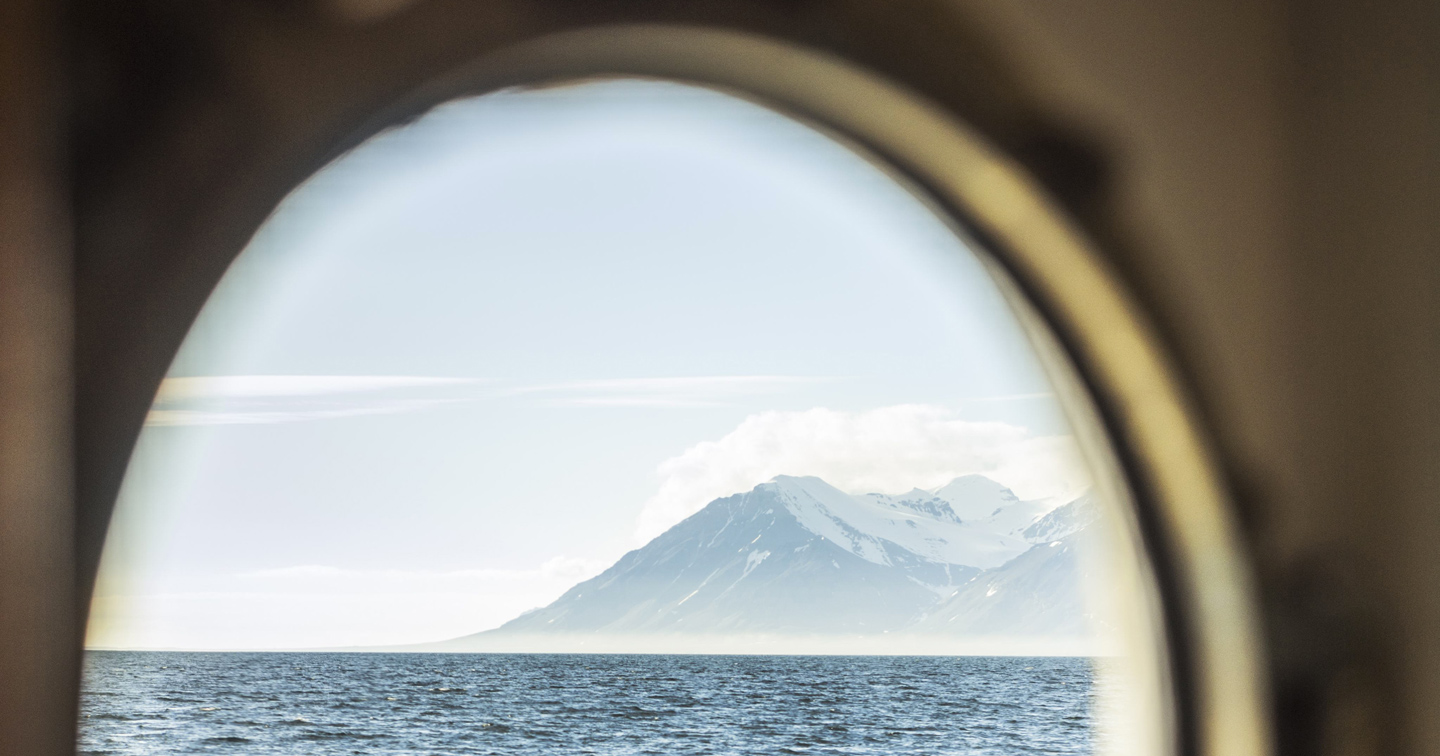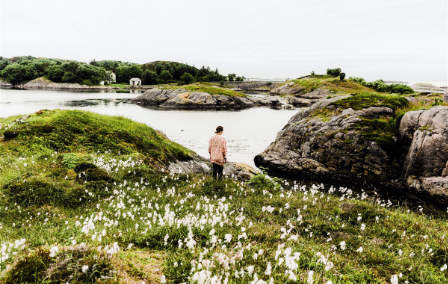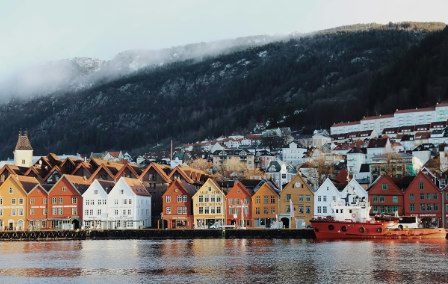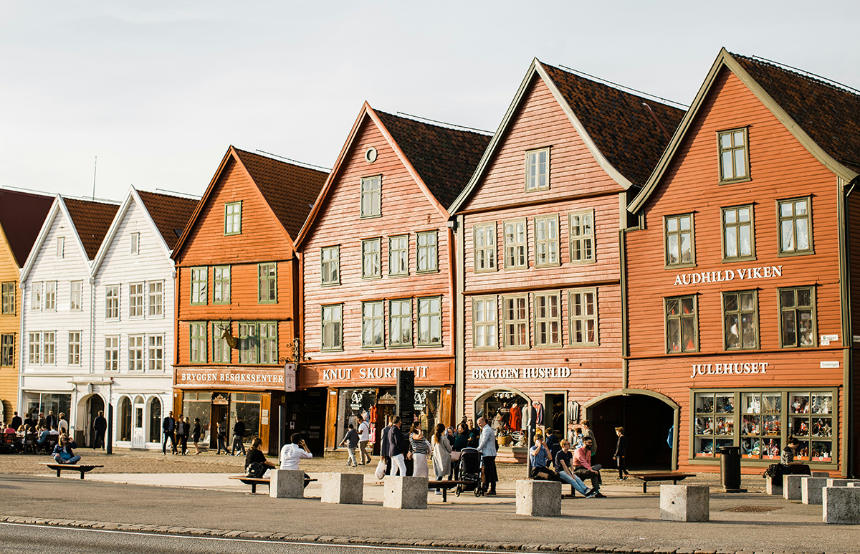Published 5th May. 2025
Reading time
Historically, Norway has had to be resourceful when it comes to food (they have a harsh climate to thank for that). Many of the traditional methods of cooking and preserving food are still used today; Norway’s cuisine is characterised by locally sourced, seasonal produce and simple preparation that let nature’s flavours sing. Whether from the land or the sea, there’s something to suit every palate – from fermented fish and tender lamb to rich, caramelised cheese. Eager to find out more? We’ve rounded up the best traditional food in Norway for you to try (or steer clear of) on your next trip…
1. Torrfisk
2. Farikal
3. Rakfisk
4. Kjottkaker
5. Brunost
6. Pinnekjott
Norway boasts the second-longest coastline in the world, so it’s no surprise that seafood is a staple in its cuisine. Perhaps the most famous fish in Norwegian waters is skrei – a seasonal Arctic cod prized for its delicate flavour and flaky texture, caught in the icy waters off Northern Norway. Skrei is the main fish used for torrfisk (stockfish), a type of dried fish. This method of drying dates back to the Viking Age, when torrfisk was an important commodity in trade among Nordic nations. Today, the cod is still hung outdoors to dry out in the elements for months before it’s enjoyed as a snack or used in dishes such as lutefisk, a legendary Christmas dinner dish that involves rehydrating torrfisk in lye until it becomes gelatinous (yum).

Image by spumador / Fotolia
Norway’s emerald-green pastures provide the perfect grazing conditions for animals, and in summer, around two million sheep munch on the country’s lush rolling hills and mountainsides. Thanks to all the time spent roaming in unspoilt nature, Norwegian lamb meat is renowned for being tender and juicy. Enter Norway’s national dish: farikal. This simple stew comprises slow-cooked lamb or mutton, cabbage, boiled potatoes and sharp lingonberry sauce. It’s a must-eat in autumn, and there’s even a feast day dedicated to it in late September. Traditional food in Norway doesn’t get much better than this (unless you’re a vegetarian).
You’d be forgiven for wanting to forgo fermented trout, but love it or hate it, it’s a staple in Norway leading up to Christmas. Rakfisk is made by salting, layering and pressing fish fillets in wooden barrels, which are left to ferment for one to three months before being consumed in late autumn or early winter. In true Norwegian style, this involves a festival; the Norwegian Rakfisk Festival is held in Valdres in late autumn to celebrate the annual consumption of this funky-smelling fish. Doesn’t tickle your tastebuds? You’re more likely to enjoy what it’s commonly served with – lefse, a potato-based flatbread, butter, sour cream, red onion and beetroot.
While Sweden might be more closely associated with meatballs (thanks, IKEA), Norway gives its neighbour a run for its money with its rival recipe, kjottkaker. A popular traditional food in Norway, these marvellous meatballs were historically the preserve of the upper classes (the only group with access to meat grinders). Kjottkaker are typically larger and flatter than their Swedish cousins and are usually made from ground beef that’s been spiced with ginger and nutmeg. They’re then drenched with a thick brown gravy and served alongside mashed or boiled potatoes, vegetables like peas or cabbage and tart lingonberry jam. The ultimate comfort food.

Image by Marius Viken / Kontrast
Open a local’s fridge in Norway, and you’ll likely find brunost – an iconic (yet divisive) brown cheese. But what gives it its distinctive tan? (Clue: it’s not the sun). Brunost is made by mixing whey (a byproduct of cheese-making) with cow’s or goat’s milk and sometimes cream; during the production process, the milk’s sugars caramelise and turn the cheese brown. This gives it a tangy, savoury-sweet flavour that sets it apart from other cheeses. The origins of brunost can be traced back to milkmaid Anne Hov in 1863, who is credited with first creating this fudgy foodstuff. Usually eaten on bread, in sandwiches or with waffles, this creamy concoction is served using a traditional cheese slicer.
Last but not least on our list of traditional food in Norway is pinnekjott. Another seasonal special that makes the most of Norway’s free-grazing sheep, it’s a dish of salted, air-dried lamb or mutton ribs that’s eaten on Christmas Eve (especially in western parts of Norway). Traditionally, the ribs are cured, sometimes smoked, then steamed over birch sticks (pinnekjott means ‘stick meat’) and served with mashed swede and potatoes. Like many of Norway’s traditional dishes, pinnekjott originates from a time when food preservation was crucial to survival – salting and drying meat was a common preparation for long, harsh winters. Today, the dish’s rich, salty and fatty flavours are enjoyed by around 40% of the population during the festive period.
Written by Hannah Whitehall | Header image by Eva Kongshavn / Getty Images

Norway’s majestic fjords, verdant valleys and wild isles offer something special in every season, so it’s easy to see why our team are so passionate about the country. Using their expertise to tailor every trip, you could enjoy mushing a team of huskies, fishing for dinner in the Lofoten Islands, taking part in a local cooking class, and much more. We can advise the most scenic driving routes, tips for avoiding crowds and the best spots to admire Norway’s beauty, be it a cosy fisherman’s rorbu or Scandi-style hotel. The weather can change quickly, but our fantastic Concierges will ensure everything runs smoothly, regardless.
ENQUIRE NOWPractical advice and inspiration for your next trip

A holiday to Norway in May is all about good food and even better views. Enjoy the flourishing landscapes and quieter hiking trails before the busy summer crowds. Sample fresh seafood in Bergen and celebrate Norway’s National Day, or delve into Trondheim’s music scene at the city’s annual Jazz Festival. For outdoor lovers, Lofoten awaits. Embark on a sea eagle safari, kayak through the fjords or marvel at the Midnight Sun.
1st September 2025 - Norway Travel Inspiration

Norway might be most famous for its cinematic landscapes, but its cities are chock-full of charm too. Whether you’d rather hang out in the cool capital, venture beyond the Arctic Circle or tuck into freshly caught seafood on the coast, we’ve rounded up the best cities in Norway for every eventuality. From Alesund’s Art Nouveau architecture to Bergen’s fantastic fjords, read on to discover which Norwegian cities should be on your travel radar… 1.
21st July 2025 - Norway Travel Inspiration

People tend to think of Norway as either a summer or winter destination, but September sits quietly in between – still warm enough for hiking and exploring, but with a chill in the air that brings with it beautiful autumnal scenery. The reasons for a September Norway holiday don’t end there, though. Make a beeline to Oslo for festivals aplenty, head west on a scenic seven-hour journey on the Bergen Railway or marvel at the unfolding colourful landscapes aboard a coastal cruise.
7th July 2025 - Norway Travel Inspiration

Our team of destination experts will get to know you and your unique requirements for your holiday

We work with you to build an ultra-personalised holiday itinerary with your choice of accommodation, experiences and activities

All of our holidays include little extras designed to make a big difference to your trip, from fast-tracking you through airport check-in and security to our network of local Concierges